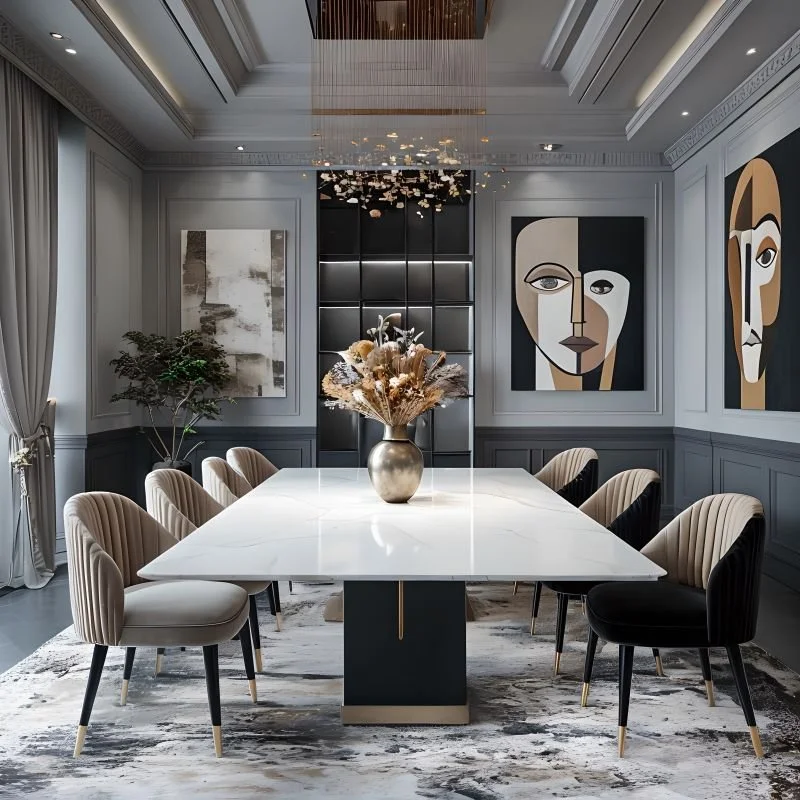Designing with Art: The Secret Language of Visual Harmony
As interior designers, we often say art finishes the story of a space. But how do we choose the right piece?
Let’s break it down using one of our recent dining room designs ✨👇
🔹 1. Patterns that Speak:
Notice how the abstract faces in the artwork echo the curves of the velvet chairs? This repetition of shapes creates a subconscious rhythm in the room—your eye dances from wall to seat and back again. Always look for patterns in form, not just fabric.
🔹 2. Color as a Conversation:
The muted golds, blacks, and earthy tones in the paintings don’t just sit on the wall—they belong to the room. Why? Because they echo the tones in the rug, vase, and even the metallic details of the chandelier and chair legs.
Pro tip: Pull colors from your finishes and accents to create a palette bridge through your art.
🔹 3. Emphasis through Contrast:
The bold, graphic lines in the artwork draw attention without overwhelming the serene vibe of the room. This is emphasis done right—it guides focus and elevates without distraction. Think of art as the exclamation mark in your design sentence.
🔹 4. Proportion is Power:
Too small, and the art looks lost. Too big, and it dominates. Here, the large-format pieces are perfectly scaled to balance the tall ceilings and the elongated dining table.
When in doubt: Measure the wall, subtract 30–40%, and aim to center your art at eye level (about 57–60” from the floor).
💡 What does this teach us?
Art isn’t just decoration. It’s a tool of balance, emotion, and storytelling. Whether you’re a designer or a homeowner, choosing art should never be an afterthought—it’s the punctuation to your style.


